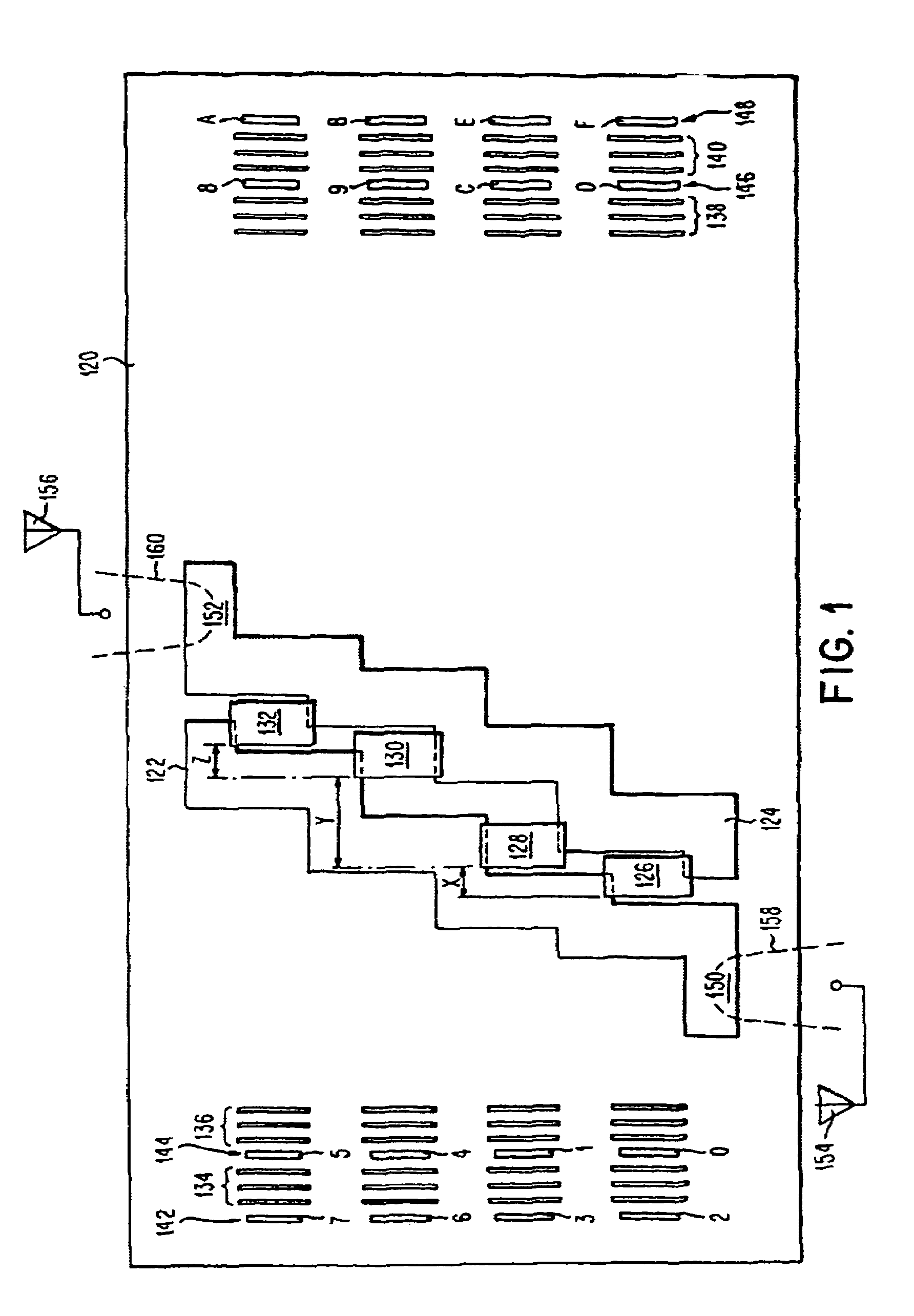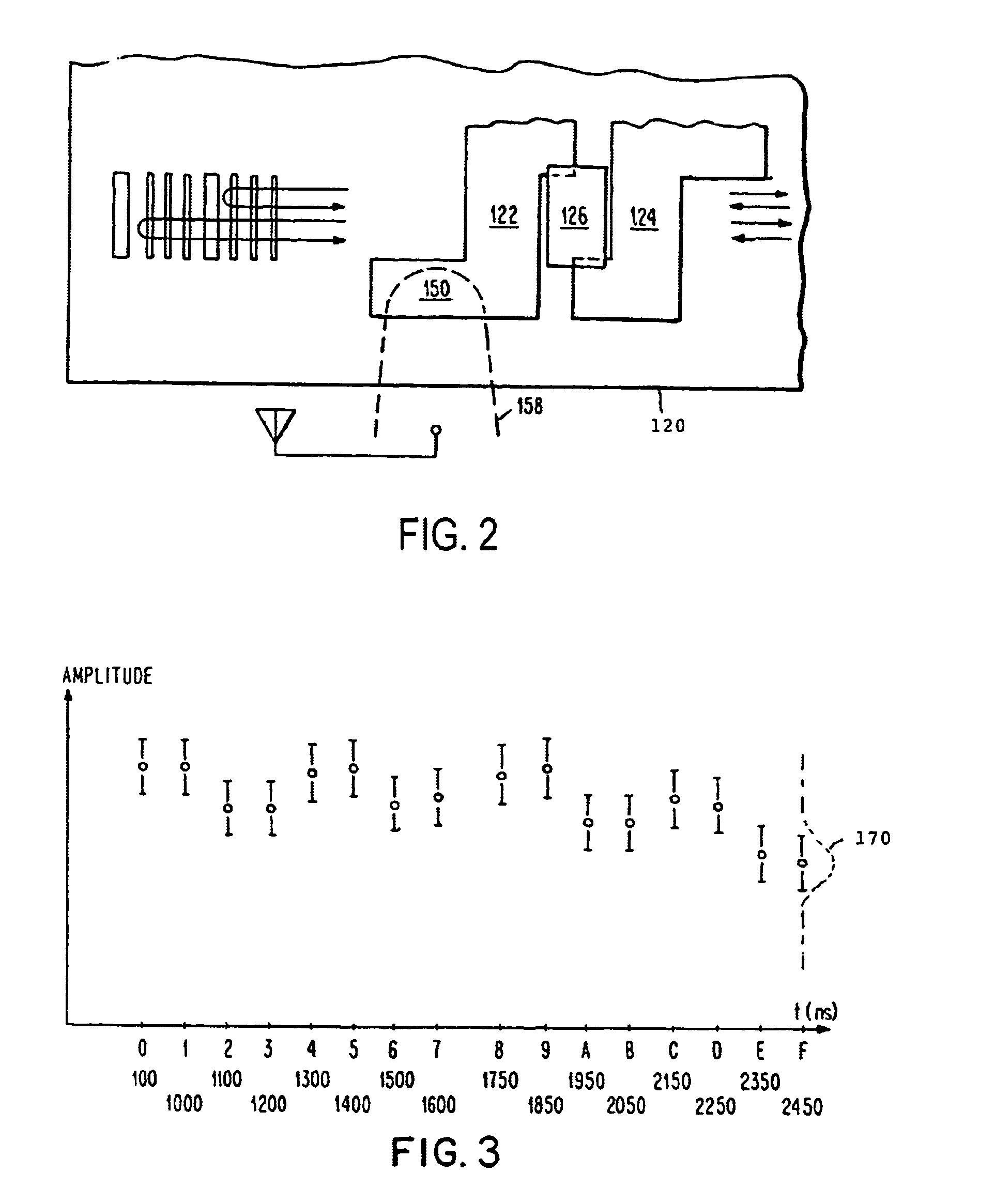Frequency hopping spread spectrum passive acoustic wave identification device
a passive acoustic wave and frequency hopping technology, applied in the direction of electromagnetic radiation sensing, instruments, reradiation, etc., can solve the problems of acoustic path complexity, short transmission time between radio frequency interrogation system and transponder, and loss of efficiency, so as to reduce the advantages of invention, narrow the filter band, and improve the effect of performan
- Summary
- Abstract
- Description
- Claims
- Application Information
AI Technical Summary
Benefits of technology
Problems solved by technology
Method used
Image
Examples
Embodiment Construction
[0090]The preferred embodiments of the present invention will now be described with reference to the drawings. Identical elements in the various figures are designated with the same reference numerals.
[0091]An interrogation system according to the present invention is provided which employs a frequency hopping spread spectrum signal having a pseudorandom sequence which excites a set of frequencies. Typically, the interrogation sequence is repeated continuously. The interrogation signal occupies, for example, a band of approximately 20 MHz centered at 915 MHz. The band is divided into 128 discrete frequencies, each of occupies a period of about 15 μS. For example, with a frequency hopping period of 15 μS, the system generates an interrogation pulse at a selected frequency for 7.5 μS, is silent and insensitive for 300 nS to eliminate near-field echos, and then listens for 4 μS for the return signal. The system is then silent and insensitive for the remaining portion of the cycle, abou...
PUM
 Login to View More
Login to View More Abstract
Description
Claims
Application Information
 Login to View More
Login to View More - R&D
- Intellectual Property
- Life Sciences
- Materials
- Tech Scout
- Unparalleled Data Quality
- Higher Quality Content
- 60% Fewer Hallucinations
Browse by: Latest US Patents, China's latest patents, Technical Efficacy Thesaurus, Application Domain, Technology Topic, Popular Technical Reports.
© 2025 PatSnap. All rights reserved.Legal|Privacy policy|Modern Slavery Act Transparency Statement|Sitemap|About US| Contact US: help@patsnap.com



